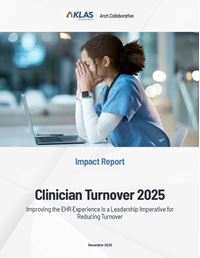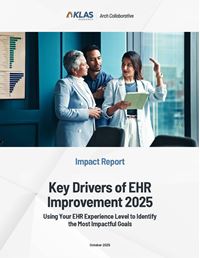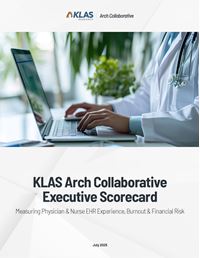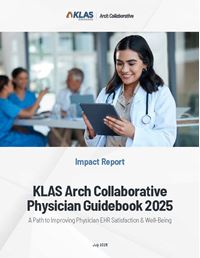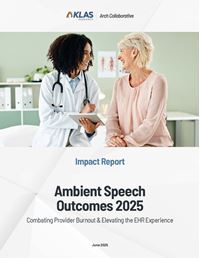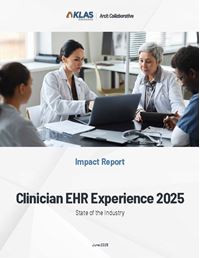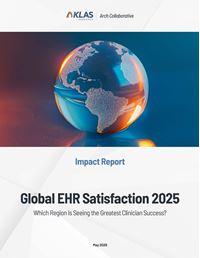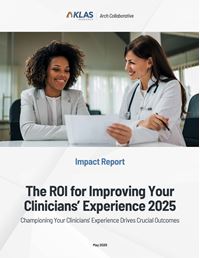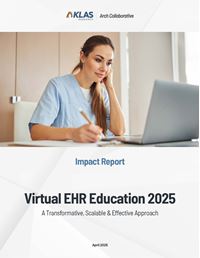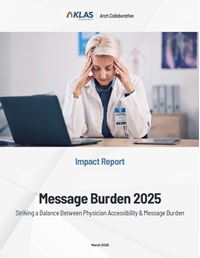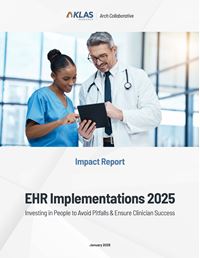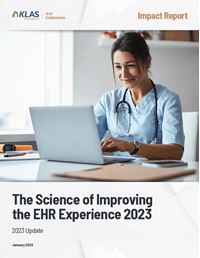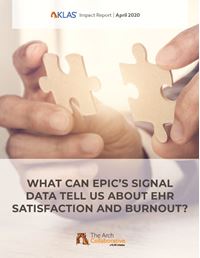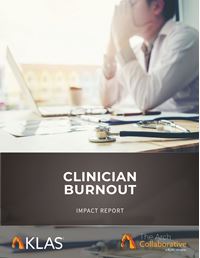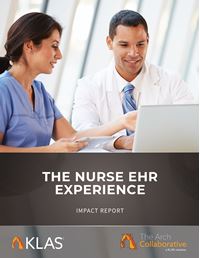Message Burden 2025
Striking a Balance Between Physician Accessibility & Message Burden
According to KLAS data, 59%† of patients are using technology to communicate with their provider’s office before or after visits, and 93%‡ of those patients plan to continue using technology for provider communication. However, this increased access to healthcare providers doesn’t necessarily equate to increased access to care, and ambulatory physicians in particular feel overwhelmed by the sheer volume of messages—projected to grow as patients’ use of messaging tools expands. This KLAS Arch Collaborative report—the first to focus on message burden—looks specifically at how ambulatory physicians within health systems are balancing message volume with patient expectations.
† Out of 5,913 interviewed patients
‡ Out of 3,474 interviewed patients
Jenna Anderson, Connor Bice, Lauren Manzione |
Thursday, March 13, 2025
